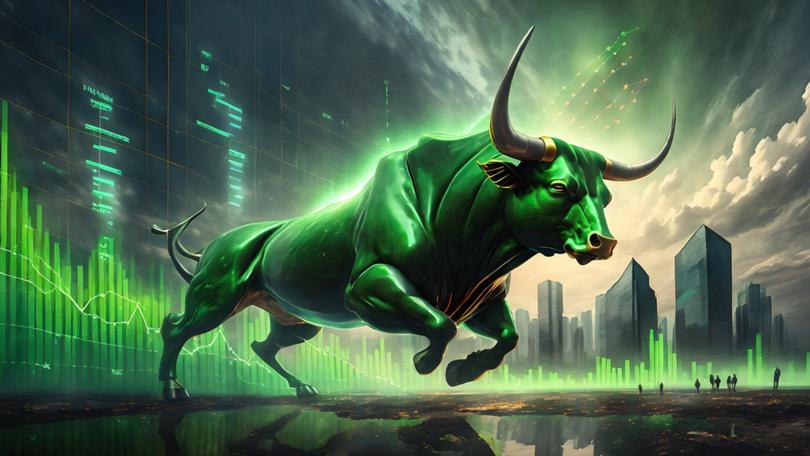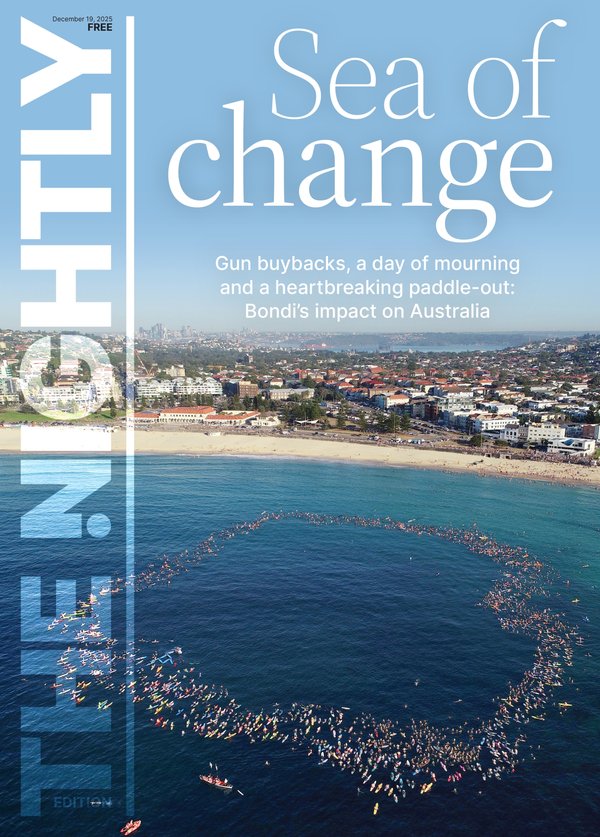The Economist: Stock markets are on an astonishing run. Here are the three threats that could end it

All around the world, stock markets have been rising at a breakneck pace. Whether you are in America, Europe, Japan or India, share prices listed on a bourse near you have spent most of this year setting fresh records, only to break them again straight away. America’s S&P 500 index of large companies has rocketed by nearly 60 per cent since a trough in 2022. True, Chinese investors are in a funk. But they cut lonely figures: exclude China from MSCI’s index of emerging-market shares, and the remainder have been clocking rapid gains, too.
To a certain extent, this record-smashing is to be expected. Dump the losers periodically, as benchmark indices tend to, and the history of equities is one long (albeit frequently interrupted) march upwards. Bear markets and crashes abound, but once prices recover to set one new high, a stream of others usually follows.
This has led global stocks to deliver an annualised real return of 5.1 per cent since 1900, and American ones of 6.5 per cent. Worry all you like that the narratives being spun around today’s boom — from techno-euphoria in America to a corporate-governance revolution in Japan — are overblown, and that a reversal is coming. Those seeking riches should simply set aside such concerns and invest for the long run.
Sign up to The Nightly's newsletters.
Get the first look at the digital newspaper, curated daily stories and breaking headlines delivered to your inbox.
By continuing you agree to our Terms and Privacy Policy.Yet in the long run everyone is dead, and in the short run investors face few greater temptations than trying to predict — and dodge — the next crash. For the professionals, doing so is part of the job, and just now plenty fear a correction, particularly in America. “A lot of people I speak to are very worried,” says Torsten Slok, chief economist at Apollo Global Management, an asset manager. “The bubble is just getting bigger and bigger. That’s when you need to worry that everyone will run for the exits at the same time.”
Mr Slok is in good company. Earlier this month Goldman Sachs’ strategists published a note entitled “Summertime blues”, warning that share prices have risen relative to bonds even as the risk of shocks has grown. JPMorgan Chase went much further, arguing that large numbers of investors have aggressively crowded into positions, based on improbable expectations of earnings growth. Such “hyperbolic moves in price and sentiment”, the bank’s researchers conclude, “are more often violently corrected than not when the exuberance runs its course”. Mike Wilson, a famously bearish chief investment officer at Morgan Stanley, who departed from his usual pessimism earlier this year to predict share prices would keep rising, has conducted a reverse-ferret. “I think...a 10 per cent correction is highly likely sometime between now and the (US) election,” he told Bloomberg Television recently.
Analysts have plenty of reason to be jittery. Valuations, or the multiples by which underlying earnings are scaled up to generate share prices, have risen from expensive to alarming. Since the beginning of 2020, before the crash that accompanied the spread of COVID-19, the nominal market value of America’s S&P 500 index has risen by almost 80 per cent, more than twice as much in percentage terms as the increase in American GDP. The index’s cyclically adjusted price-earnings (cape) ratio, a measure popularised by Robert Shiller of Yale University, is 36. It has only been higher near the worst of the dotcom bubble and in 2021, both of which preceded crashes.
This does more than merely set investors’ nerves on edge. It also means that the “cape yield”, the cape’s inverse and a predictor of real returns, is close to a historic low, providing an impetus to sell stocks. Indeed, the cape yield only just beats the guaranteed real yield on inflation-protected Treasury bonds (see chart 2).
All that is needed, in other words, is a change in the financial mood and an excuse for investors to abandon their positions. At current interest rates, American share prices would need to fall by around one-third for the gap between the cape and real Treasury yields to revert to the mean. For the cape to return to its long-run average, they would have to crater by more than 50 per cent.
In India valuations are even more extreme; in Europe and Japan, they are a bit less, but still unusually high relative to recent levels. Nevertheless, since American stocks comprise the lion’s share of global equity value, it is their problems that investors must focus on. And so the question, even for those with decades-long time horizons, is nigh unavoidable: what might prompt such a crash?
To keep the doom-mongering tractable, divide the worries into three groups. The first concerns exotic shocks that could come from outside the financial system. Should Mr Trump win America’s presidency and enact the tariffs he has promised, a tit-for-tat response might trigger a downturn at the same time as it drove up inflation. War in the Middle East, or in Ukraine, could spill across more borders, ratcheting up oil prices. Worst of all, a Chinese blockade of Taiwan might draw America into conflict with another superpower.
But few investors are going to ditch their shares because a third world war would hurt them. Such tail risks, with low probabilities and mighty consequences, are notoriously difficult for financial markets to price. In any case, geopolitical flare-ups tend to be associated with such radical uncertainty that it is not clear whether investors can do much to hedge against them at all.
Three-act tragedy
The second group concerns shocks from the financial system — where the Treasury market is the main worry. In March Phillip Swagel, head of Congress’s fiscal watchdog, warned that America’s yawning fiscal deficit (currently 7.4 per cent of GDP) could spark a bond-market panic similar to that caused by Liz Truss, Britain’s prime minister for several weeks in 2022. Stuart Kaiser of Citigroup points out that America’s deficit has risen in plain sight, so it is hardly “something that sneaks up on you”.
The risk is that weak public finances garner more attention during the election campaign, and especially once the new president reviews taxation in 2025. Such scrutiny, Mr Kaiser notes, could be the catalyst for a bond-market crash. By threatening financial stability, and probably forcing a growth-harming degree of austerity, this could easily infect the stock market, too.
The final group of worries concerns economic developments that investors are more used to pondering, namely changes to growth, interest rates and corporate earnings. Growth figures are unlikely to set share prices plunging solely by continuing to slow. Having beaten expectations throughout 2023, America’s economy set the stage for the current bull run. Share prices then accelerated even more once the expansion slowed.
Instead, the danger comes from the near-perfect “soft landing”, or fading of inflation without an economic downturn, that investors have priced into the market, says Apollo’s Mr Slok. Such central-banking coups have rarely been pulled off in the past. Should any other scenario come to pass — a “no landing” which saw disinflation come to a halt, say, or a delayed recession — high expectations baked into share prices would make them vulnerable to a correction.
Consider the monetary policy that would accompany a “no landing” scenario. Throughout the tightening campaign begun by the Federal Reserve in 2022, shareholders have pinned hopes on rate cuts. The only change has been how many they expect, and how quickly. At present, traders have priced in three by the year’s end. What they have priced out almost entirely, and more so after America’s consumer-price inflation fell to 3 per cent in the year to June, is the chance that rates could be hiked.
Jerome Powell, the Fed’s chairman, has become increasingly doveish in his public speeches, meaning this is unlikely. Yet disinflation has slowed to an agonising pace, wages are rising faster than productivity growth and 2 per cent inflation would allow, and with geopolitics volatile the risk of shocks is ever-present. Although the odds of central bankers turning hawkish again might be low, they are not zero. Just as the prospect of unanticipated tightening tipped shares over the edge in 2022, it could do so today if the news turns.
And then there are corporate earnings. As JPMorgan’s analysts note, the consensus view is for them to shoot the lights out, with annual rates of nominal growth in the double digits, in aggregate, for the foreseeable future. (By way of comparison, over the 30 years to 2019 real profits rose by 4 per cent a year.) That is even as the economy cools, demand fades and profit margins appear to have peaked. So it is not only artificial-intelligence stocks to which investors have attached extravagant hopes — though Nvidia, where analysts expect revenues to double over the coming year, before doubling again over the next four, stands in a class of its own. Should earnings fall short of such stratospheric expectations, the bull market could come to an abrupt end.
What is striking about the list of reasons to worry is that you do not need to reach for its more lurid examples of financial or geopolitical catastrophe to envisage a gut-churning plunge. The likeliest culprit to kill the bull market is probably something as run-of-the-mill as a few underwhelming earnings reports. After all, the bursting of the dotcom bubble came not from any seismic shock but a simple realisation that investors had gotten high on their own fumes. A dizzying ascent in the past few months has brought America’s stockmarket to within striking distance of being more vulnerable than it has ever been before. It does not take much to crash a market that is priced for perfection.
